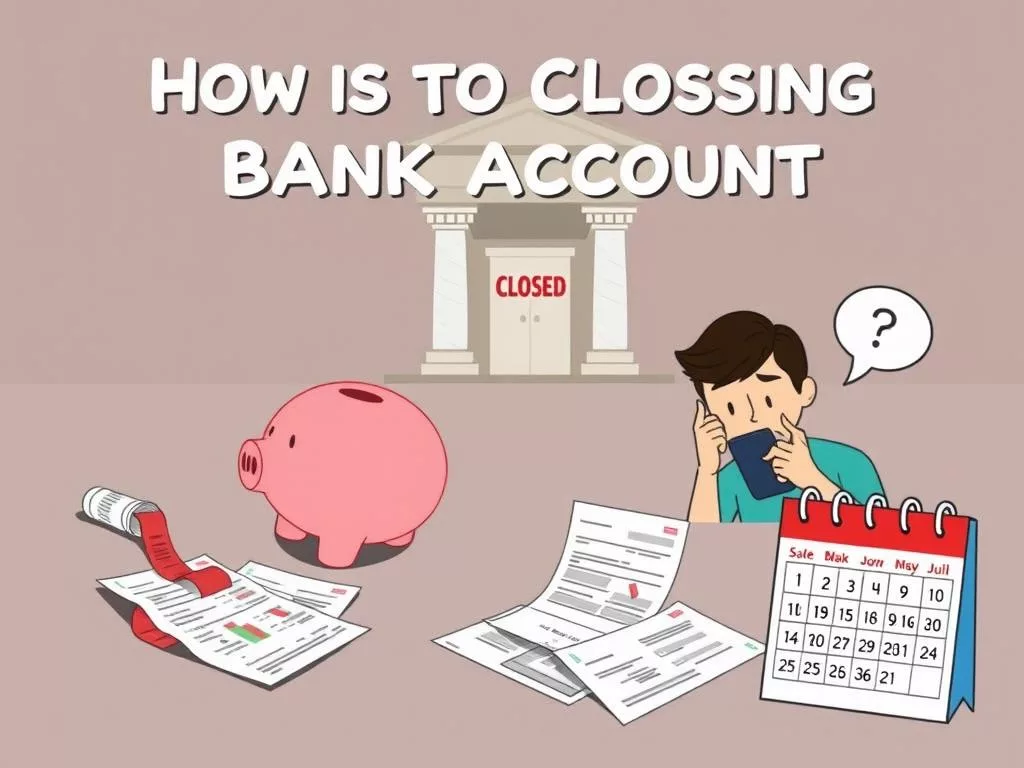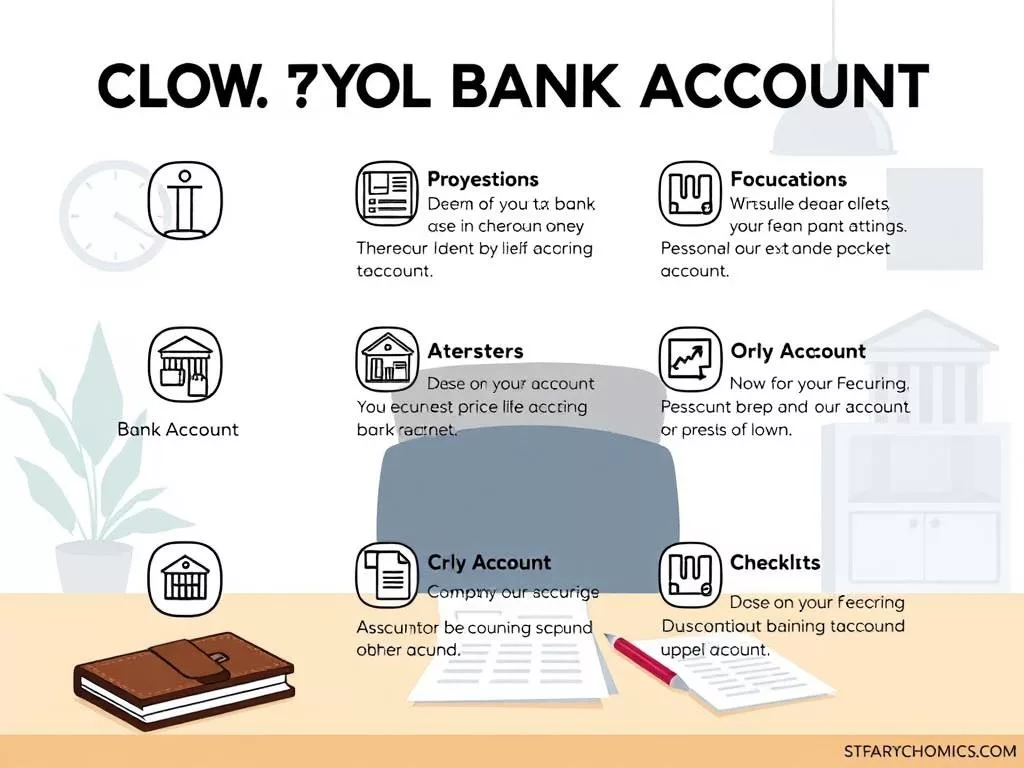Knowing how to close a bank account in the United States is key. It’s important if you’re moving, unhappy with your bank, or looking for better financial options. Closing an account might seem tough, but the right steps make it easier. I’ll show you what to do before you cancel your account, focusing on preparation.
Good preparation helps avoid unexpected fees and makes switching banks smooth. Let’s look at what you should think about before making this big decision.
Reasons for Closing a Bank Account
Understanding why people close their bank accounts is key. There are many reasons for this decision.

Financial changes often lead to closing accounts. Moving or looking for better banking deals are common reasons. Many seek better banking experiences.
Being unhappy with service is another big reason. Poor service, high fees, or limited options can push people away. They might feel their bank doesn’t meet their needs.
Account status is also important. Negative balances or too many overdraft fees can prompt closure. Banks watch for suspicious activity, which can also lead to closure.
- Inactivity: Banks consider accounts abandoned after three to five years without any activity.
- Negative Balances: A consistent negative balance can lead to account closure.
- Policy Violations: Violating specific account policies, like using a business account for personal use, can also result in closure.
Situations involving joint accounts or accounts of deceased individuals may require closure. These reasons are complex and need clear bank communication. For more information, check this resource on account closure scenarios.
It’s important to understand how these reasons affect your finances. As banking changes, knowing these reasons helps make better choices.
Steps to Follow Before Closing Your Bank Account
Before closing a bank account, it’s wise to follow a detailed checklist. This ensures a smooth transition. It’s important to prepare well to avoid any problems. Here are the key steps to take:
- Open a New Account: It’s smart to have a new account ready before closing the old one. This keeps your banking services uninterrupted and makes managing your money easy.
- Transfer Funds: Moving your money to the new account early is key. This prevents any balance in the old account and avoids pending payments that could cause trouble later.
- Update Automatic Payments and Direct Deposits: Changing these settings is critical. It ensures you pay bills on time and avoids overdrafts and penalties.
- Check for Pending Payments: Make sure there are no pending transactions in the old account. This step avoids surprises and ensures a clean closure.
- Consult Account Agreements: Reading your account’s terms is important. Look for any fees for closing, which might apply if your account is new. Some banks charge fees if it’s been open less than six months.
Following these steps makes closing your account easy. Remember, most banks require a visit or call to close an account. For more tips on this process, check out this guide.
| Action | Notes |
|---|---|
| Open a New Account | Ensure uninterrupted access to banking. |
| Transfer Funds | Prevent pending payments by managing funds early. |
| Update Payments | Avoid missed payments and overdraft fees. |
| Check Pending Payments | Ensure all transactions are cleared. |
| Review Agreements | Identify any closure fees or penalties. |

How to Close a Bank Account in the USA
Closing a bank account in the USA has several clear methods. These methods cater to different customer preferences. Knowing these methods makes the process smoother and more efficient.
1. In-Person Closure: Visiting a local branch lets me talk directly to bank staff. I show my ID and fill out a closure form. This method usually closes the account right away, but I should check the balance is $0 to avoid fees.
2. Online or Phone Closure: Many banks offer online or phone services for closing accounts. I must ensure my balance is $0. Banks might ask security questions or send a code to my phone to verify my identity. It’s important to avoid closing accounts near bill due dates to avoid delays.
3. Written Request: For a more formal approach, I can send a written request by mail. I include my account details and a request for closure. It’s key to follow up to confirm the bank received it, to avoid extra fees.
Here are some key tips for closing a bank account:
- Schedule the closure a few days before the monthly fee to allow processing time.
- Leaving a small balance can cover any unexpected transactions that might incur fees.
- Downloading transaction records is important for future reference, like taxes or proof of income.
Understanding the different closure methods helps me choose the best one. The time it takes to close an account varies by bank and account status. But, it usually takes just a few days.
| Method | Requirements | Considerations |
|---|---|---|
| In-Person Closure | ID, Closure Form | Immediate processing, ensures zero balance |
| Online/Phone Closure | Account access, Confirmation | Must confirm identity, pending transactions may delay |
| Written Request | Account and personal details | Follow up on receipt, possible mailing delays |
Knowing these methods helps me navigate the bank account closure journey effectively. With proper planning, closing an account can be a smooth experience.
Special Considerations When Closing Joint Accounts
Closing a joint bank account needs careful thought because it involves everyone on the account. First, getting consent from all account holders is key. Most banks ask for permission from every person linked to the account before they can act. This makes sure everyone agrees and is transparent.
In some cases, banks might ask for a signed affidavit from other account holders. This affidavit is like a formal agreement that shows everyone agrees to close the account. It adds an extra layer of security to the process.
Another good option is to remove one person from the account. This way, one person can keep using the account while the other is removed. It’s great for partnerships where one person wants to manage the account on their own.
When someone on the account dies, things get even more complicated. It’s important to provide the right documents to close or transfer the account. This includes a death certificate and other legal papers that banks usually ask for.
To better understand these points, I’ve made a table with key joint account considerations:
| Consideration | Details |
|---|---|
| Consent for Closure | Authorization from all account holders needed. |
| Affidavit Requirements | Signed affidavit may be required for closure. |
| Removing One Party | Possibility to alter account ownership instead of closure. |
| Account Holder’s Death | Documentation like death certificate required for closure. |
| Timeframe for Closure | Closure can take from a few days to a few weeks. |
What to Do After Closing Your Bank Account
After closing a bank account, it’s important to take some steps. Getting written confirmation from the bank is key. This proof helps avoid unexpected fees or issues later.
Then, I’ll watch my old account for any activity. This ensures it stays closed and free of extra charges. Banks might charge for inactive accounts, causing problems after closure.
Lastly, I’ll update all financial institutions with my new account details. This includes payroll and automatic bill payments. These changes help in a smooth transition and improve my financial management. Reviewing my new banking setup ensures my finances stay healthy and avoids common issues after account closure.

